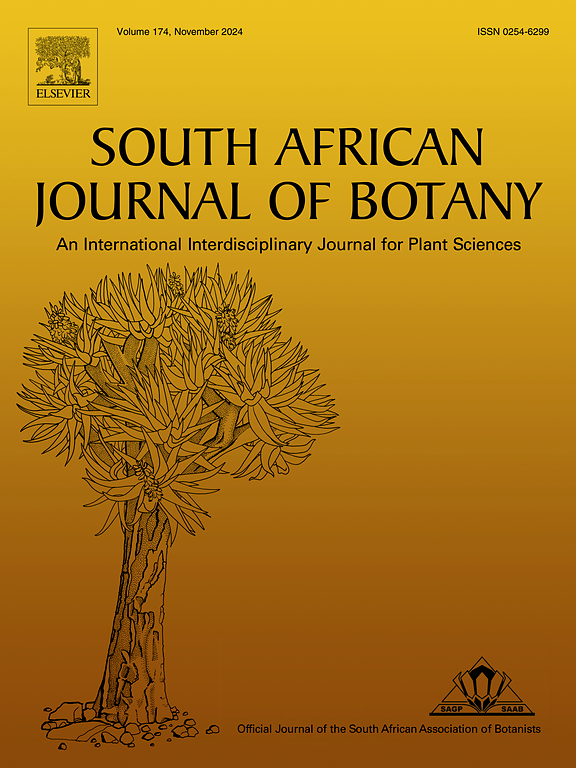Molecular docking and bio-control efficacy of Mesosphaerum suaveolens (L.) Kuntze against mosquito Culex quinquefasciatus Say
IF 2.7
3区 生物学
Q2 PLANT SCIENCES
引用次数: 0
Abstract
Plant-based insecticides are gaining attention as eco-friendly alternatives to synthetic pesticides due to their natural compounds like essential oils and extracts, which pose minimal risks to non-target organisms and the environment. Mesosphaerum suaveolens (L.) Kuntze, traditionally used as an insect repellent by Bodo tribe of Assam, was evaluated for its insecticidal efficacy against Culex quinquefasciatus, a prevalent mosquito in the region. The methanolic extract of the leaves of M. suaveolens showed significant insecticidal activity with LC50 value at 81.28 μg/mL & LC90 at 186.21 μg/mL. The GC–MS analysis revealed presence of 13 compounds out of which 11 are newly reported in M. suaveolens. For in-silico investigation, the phytochemicals identified from GC–MS analysis were investigated for their binding affinity to selected target proteins of Cx. quinquefasciatus namely: maltase 1 (Cqm1) and Odorant binding protein (OBP). Molecular docking studies predicted five potent inhibitors of the targeted proteins, and highlighted 7-Hydroxy-7, 8, 9, 10-Tetramethyl-7, 8-Dihydrocyclohepta [D, E] Naphthalene as the most promising compound. The MD simulation of two complexes “7-Hydroxy-7, 8, 9, 10-Tetramethyl-7,8-Dihydrocyclohepta [D, E] Naphthalene & maltase 1 (Cqm1)” and “7-Hydroxy-7, 8, 9, 10-Tetramethyl-7,8-Dihydrocyclohepta [D, E] Naphthalene & Odorant binding protein (OBP)”, showed that the compound 7-Hydroxy-7, 8, 9, 10-Tetramethyl-7,8-Dihydrocyclohepta [D, E] Naphthalene has a stronger inhibitory potential against maltase 1 (Cqm1) as compared to Odorant binding protein (OBP). This study underscores the potential of M. suaveolens as an effective, sustainable alternative to synthetic insecticides for controlling Cx. quinquefasciatus.

求助全文
约1分钟内获得全文
求助全文
来源期刊

South African Journal of Botany
生物-植物科学
CiteScore
5.20
自引率
9.70%
发文量
709
审稿时长
61 days
期刊介绍:
The South African Journal of Botany publishes original papers that deal with the classification, biodiversity, morphology, physiology, molecular biology, ecology, biotechnology, ethnobotany and other botanically related aspects of species that are of importance to southern Africa. Manuscripts dealing with significant new findings on other species of the world and general botanical principles will also be considered and are encouraged.
 求助内容:
求助内容: 应助结果提醒方式:
应助结果提醒方式:


